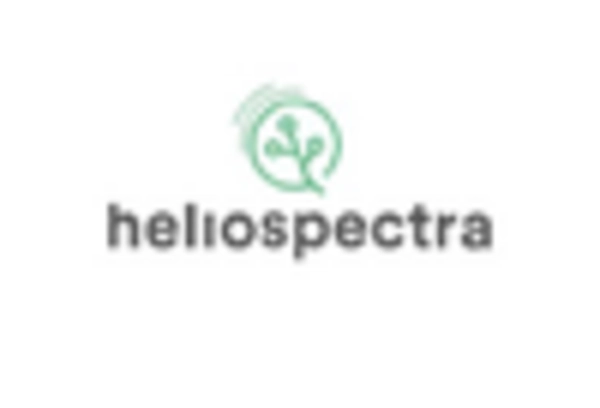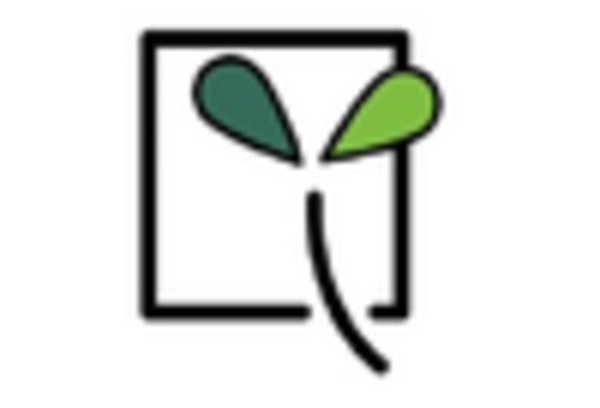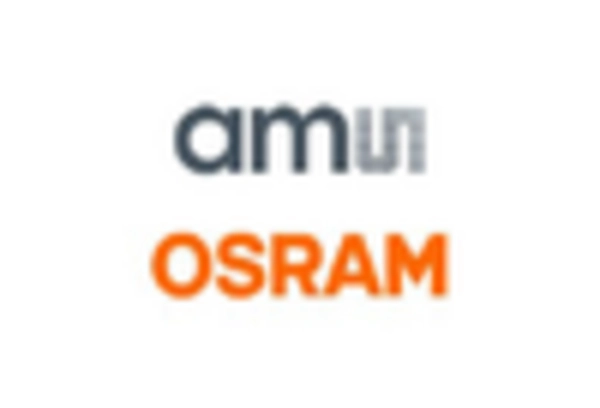Integration of Smart Technologies
The integration of smart technologies into the Floriculture Lighting Market is transforming how growers manage their lighting systems. Smart lighting solutions, which include features such as remote monitoring and automated adjustments based on environmental conditions, are gaining traction. This trend is supported by the increasing availability of IoT devices and sensors that provide real-time data on plant health and growth conditions. Market analysis indicates that the adoption of smart lighting technologies could enhance crop yields by up to 20%, as growers can tailor their lighting strategies more effectively. As these technologies become more accessible, they are likely to play a pivotal role in the evolution of the Floriculture Lighting Market.
Rising Demand for Indoor Gardening
The rising demand for indoor gardening is significantly influencing the Floriculture Lighting Market. As urbanization continues to grow, more individuals are seeking ways to cultivate plants in limited spaces, leading to an increased interest in indoor gardening. This trend is further supported by the growing awareness of the benefits of home gardening, including improved air quality and mental well-being. Recent surveys indicate that nearly 50% of urban dwellers are considering indoor gardening, which in turn drives the demand for specialized lighting solutions. Consequently, manufacturers in the Floriculture Lighting Market are developing compact and efficient lighting systems tailored for indoor environments, thereby capitalizing on this burgeoning market.
Expansion of Commercial Greenhouses
The expansion of commercial greenhouses is a key driver in the Floriculture Lighting Market. As the demand for fresh produce and ornamental plants continues to rise, many growers are investing in greenhouse facilities that utilize advanced lighting technologies. Data suggests that the commercial greenhouse sector is expected to grow by 10% annually, with lighting solutions playing a crucial role in maximizing production efficiency. These facilities often require specific lighting conditions to optimize plant growth throughout the year, leading to increased investments in high-quality lighting systems. This trend not only enhances productivity but also supports the overall growth of the Floriculture Lighting Market, as more growers recognize the importance of effective lighting in achieving their cultivation goals.
Sustainability and Eco-Friendly Practices
Sustainability is becoming a cornerstone of the Floriculture Lighting Market, as consumers and producers alike are increasingly prioritizing eco-friendly practices. The demand for sustainable lighting solutions, such as solar-powered systems and energy-efficient LEDs, is on the rise. Recent statistics suggest that the market for sustainable lighting solutions is projected to grow at a compound annual growth rate of 15% over the next five years. This trend is not only driven by regulatory pressures but also by a growing consumer preference for environmentally responsible products. As a result, companies within the Floriculture Lighting Market are investing in research and development to create lighting solutions that minimize environmental impact while maximizing plant health and yield.
Technological Advancements in Lighting Solutions
The Floriculture Lighting Market is experiencing a surge in technological advancements, particularly with the introduction of LED lighting systems. These systems are not only energy-efficient but also provide the specific light spectra that enhance plant growth. Recent data indicates that the adoption of LED technology in horticulture has increased by approximately 30% over the past few years. This shift is driven by the need for more efficient energy consumption and the ability to customize light conditions for various plant species. Furthermore, innovations such as smart lighting controls and automated systems are becoming prevalent, allowing growers to optimize their lighting strategies. As these technologies continue to evolve, they are likely to reshape the Floriculture Lighting Market, making it more efficient and sustainable.

















Leave a Comment